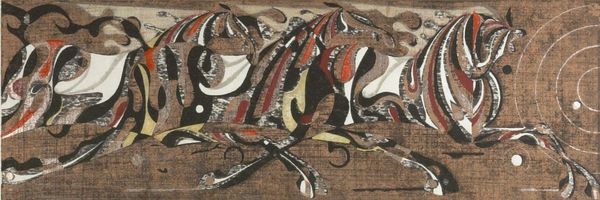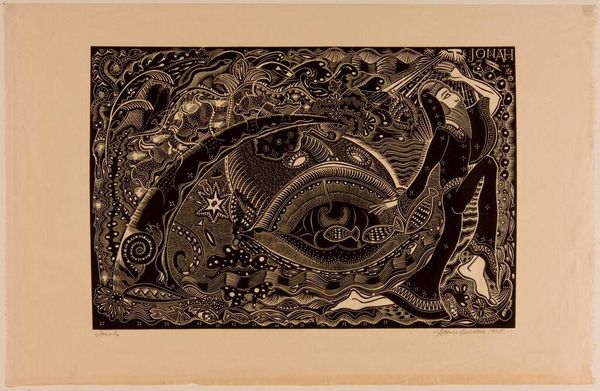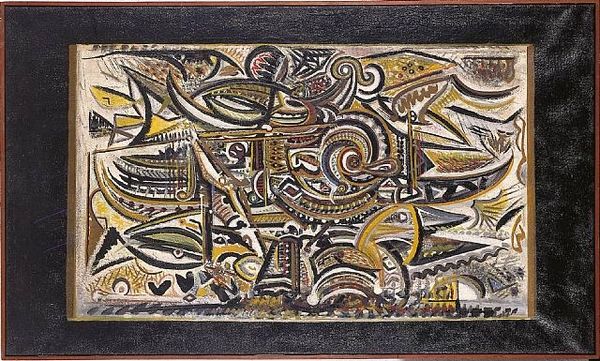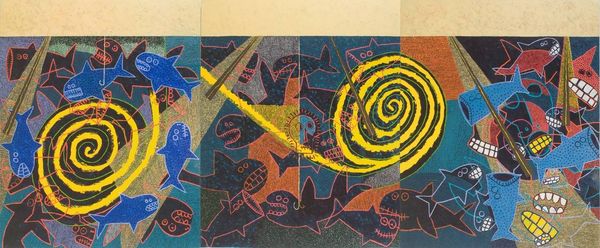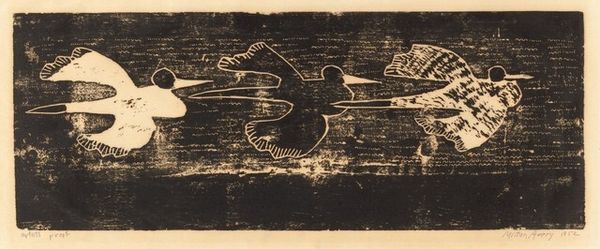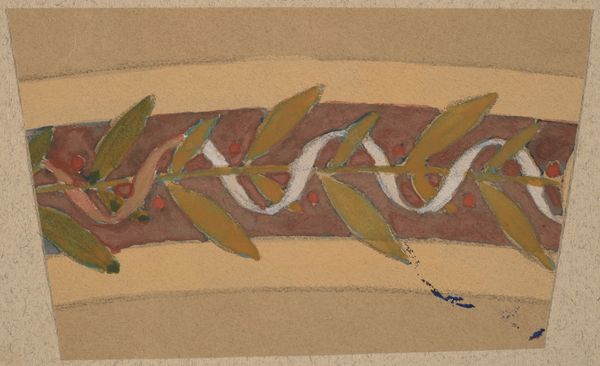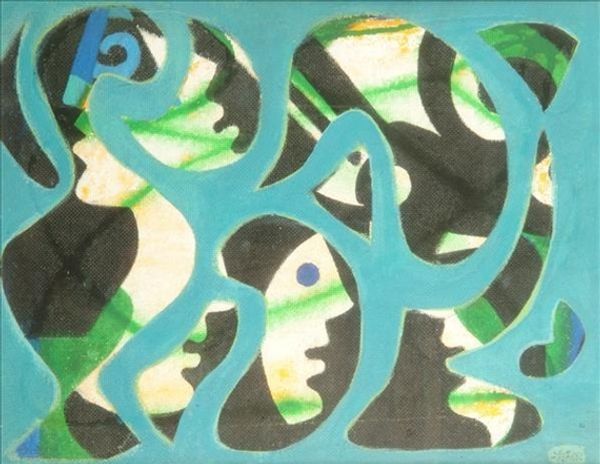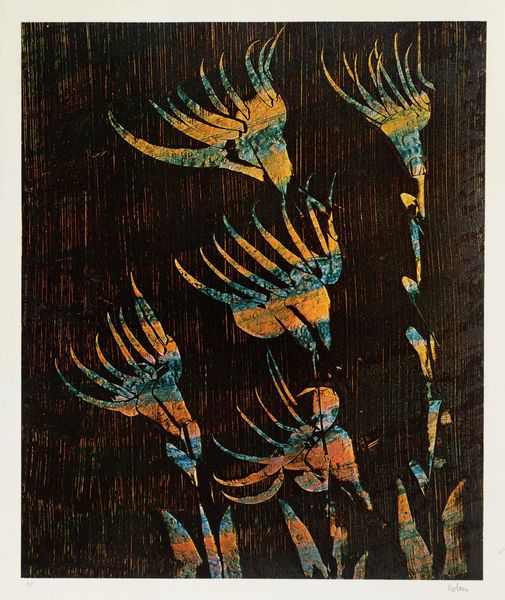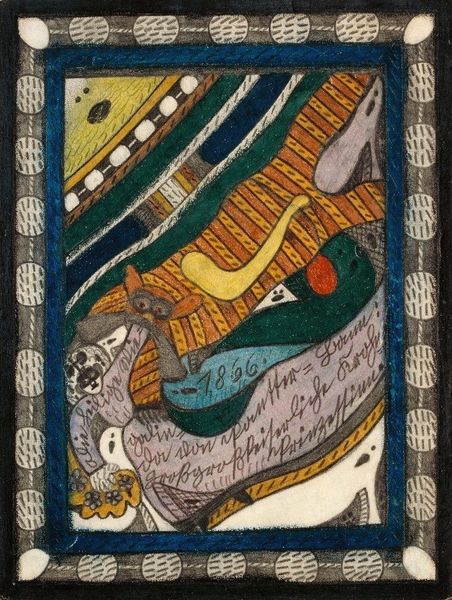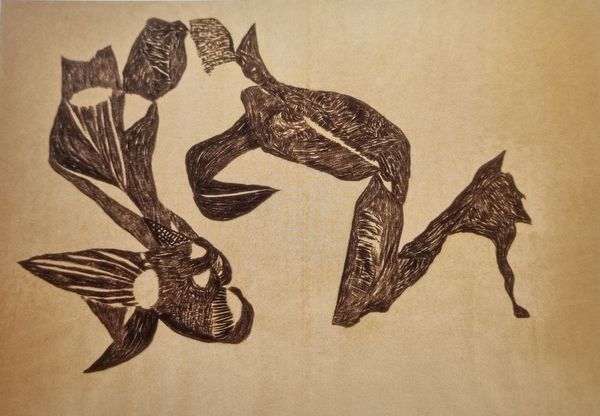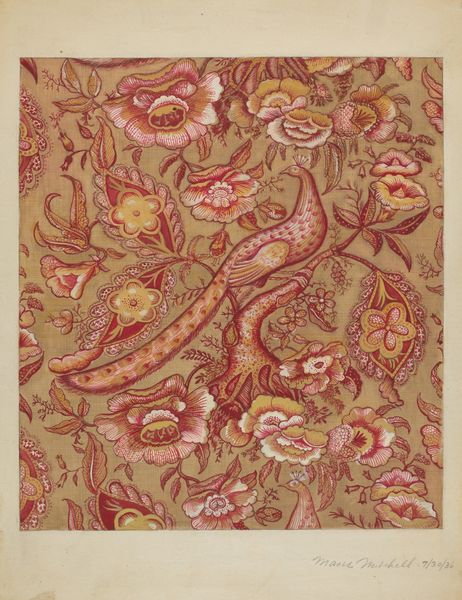
Copyright: Tadashi Nakayama,Fair Use
Curator: Tadashi Nakayama's "Five Horses Running," a woodcut from 1970, is an intriguing example of twentieth-century Japanese printmaking. Editor: My first impression is one of contained energy. Despite the subject matter suggesting dynamism, the rigid lines and muted colors create a sense of stillness. Curator: Nakayama's work draws deeply from the Ukiyo-e tradition, which historically served as a mirror to the social dynamics of its time, often reflecting the lives of the merchant class and popular culture. Consider how Nakayama, working in post-war Japan, may be subtly commenting on themes of progress, tradition, and perhaps even societal change through the symbolism of these horses. Editor: That's an interesting perspective. Focusing on the visual elements, the abstract forms and strong linear patterns immediately catch the eye. Notice the rhythmic repetition of shapes and colors. The composition invites the viewer to follow the movement of the horses across the plane. This emphasis on form transcends the purely representational, edging towards pure abstraction. Curator: Precisely, and that's where Nakayama diverges, offering commentary through abstraction. Horses in art and mythology often represent power, freedom, and nobility, and the layered context of post-war Japan—economic recovery coupled with lingering questions about national identity—creates a nuanced discourse when viewed through this lens. It begs the question: are these horses running towards progress, or away from something? Editor: I see your point. The starkness, the near-monochromatic palette—they could certainly imply a sense of urgency, or perhaps even anxiety. Yet, looked at purely aesthetically, that limited color palette provides the eye a structure, guiding and containing the frenetic movement within. The semiotic play between restraint and dynamism fascinates me. Curator: Ultimately, this work becomes a reflection on the negotiation between historical and contemporary identities in Japan during that period. It showcases not only formal artistic choices, but how the intersection of national narratives, class structures, and cultural identity is presented, or subverted, through his artistic decisions. Editor: Indeed. Whether read through a social or formalist lens, Nakayama’s piece offers us a vivid study in contrasts—stillness and motion, representation and abstraction—provoking us to re-evaluate not only the artwork itself, but our own modes of seeing.
Comments
No comments
Be the first to comment and join the conversation on the ultimate creative platform.
